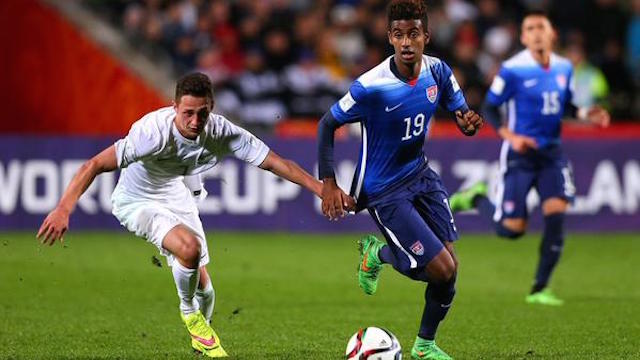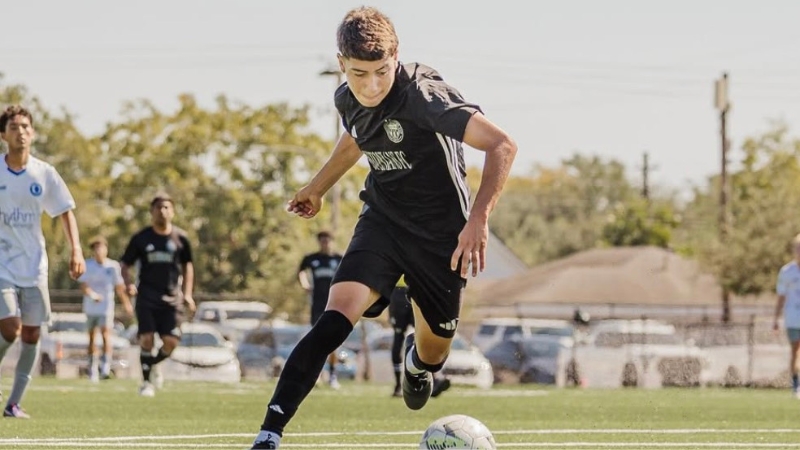Zelalem shines as U20 MNT drops New Zealand

This was more like it.
A dominant, fluid performance guided the U.S. U20 Men’s National Team to an assured 4-0 win over New Zealand in the second round of group action at the U20 World Cup on Tuesday in Auckland. The win rocketed the U.S. to the top of the group with six points from two matches and into the knockout round for the first time in eight years. The U.S. hasn’t finished in the top two of a U20 group since the 2007 World Cup in Canada, which was also the last time the U.S. won a U20 knockout match. Further, Tuesday marked just the third time in U.S. U20 World Cup history the team won consecutive games.
There’s little question the U.S. left something to be desired in their opener at the U20 World Cup. On Saturday, they scuffled through the opening half against lowly Myanmar, even falling behind before scrambling to get two answers. The U.S. left with all three points but plenty of questions in equal measure. If Myanmar was one of the worst teams at this tournament, how would they be expected to fare better against stiffer competition?
Tuesday’s answer came as swiftly as the undercurrent of the Pacific Ocean. If the U.S. continues playing like this, it may well have more than two more games in it before leaving New Zealand.
The draw the team gets in the next round will depend on its result against Ukraine in the final group match. The Ukrainians sit two points behind and are the only team that can catch the U.S. But they’ll need a win to do it, while the U.S. will take the group with a win or a draw. And the U.S. will want to assure that happens, which means staving off the impulse to rest its starters. The Group A winner gets a third place team in the first knockout stage.
But the U.S. only put itself in that position with a rollicking performance against New Zealand, which was playing in front of a charged home crowd, that all but erased the shaky start to the tournament. Rubio Rubin’s tap-in on a Bradford Jamieson wheel-about effort from seven yards got the U.S. off to a flier inside 10 minutes, and Emerson Hyndman’s open-net finish after Rubin pulled out the keeper doubled the lead before half. Gedion Zelalem put the icing on his brilliant evening by threading a through ball to Paul Arriola, who finished deftly inside an hour. Rubin added his second on a fortuitous deflection and a defensive miscue with less than 10 minutes to play to round out the American-flavored scoring.
The score line was deserved. And it came about partially because of a forced formation change due to a mounting list of injuries.
Before the tournament, holding midfielder Russell Canouse was forced off the final roster via injury. Whether or not that played a direct part, former No. 6 Kellyn Acosta was shifted to left back and Marky Delgado, one of the team’s surprise final selections, was put in that holding midfielder role. Then in the opener against Myanmar, starting striker Maki Tall broke a big toe and was forced out for the rest of the tournament.
So coach Tab Ramos got creative. In lieu of sticking with the 4-4-2 he’d pledged to use, Ramos went back to the more familiar 4-3-3, which had largely done the team well throughout qualifying. But the biggest difference, more than any tactical shift on paper, was assuredly Zelalem.
Before Zelalem entered the opener against Myanmar as a late sub, the U.S. midfield looked confused. Joel Sonora and Hyndman were overrunning each other, there was little interchange with Delgado and the strikers - Tall and Rubin - didn’t look like they knew who to pick the ball up from. In short, there wasn’t much in the way of possession leading to chances.
That changed with the introduction of Zelalem for a full 90 minutes and the switch back into a 4-3-3. Zelalem assuredly wasn’t a pure creative midfielder, but the U.S. didn’t need him to be. Both he and Hyndman sat as a kind of shelf above Delgado, with Rubin dropping into the middle and both Arriola on the right and Jamieson on the left pinching in to play off the open space. It paid dividends almost immediately with an early goal, and New Zealand, despite boasting a holding midfielder in Bill Tuiloma who’s one of the tourney’s best, couldn’t cope with the numbers.
While Hyndman, Rubin, Jamieson and center back Cameron Carter-Vickers led a cadre of players who had fine days, nobody’s was better than Zelalem’s, clearly the best player on the field for either team. Despite the fact that this was his first ever start with this group, he looked like he’d spent the entire cycling pinging passes with Hyndman and feeding Arriola. And none of Zelalem’s moments were brighter than his brilliantly worked assist to Arriola for the U.S.’s third.
Zelalem worked inside and had a clear angle toward the right flank, but instead of taking the easier option, he held possession for an extra beat and feathered a delicate ball to Arriola’s feet with no fewer than five New Zealand players hounding him. Arriola’s finish was beautifully taken, but it was Zelalem’s mix of daring and skill that made it happen.
That wasn’t an isolated incident, either. At one point, Zelalem nutmegged a defender to set up a chance in the box. Later in the second half, he pulled off a skillful rabona on a cross inside the box that whistled across the goalmouth and nearly led to a fourth goal. Rarely do U20 players anywhere look this confident, assured and borderline bored with the competition they face. Zelalem was that good.
Of course it wasn’t all Zelalem. Hyndman was the team’s muscled legs, powering through the midfield and doing much of the work to take pressure off Zelalem’s possession. And both Jamieson and Arriola were excellent as wide players in the 4-3-3, both diving into and out of space to both create chances and take some of their own. The defense, meanwhile, was its usually assured self, with the only change coming on the right with newcomer Desevio Payne starting in place of Shaq Moore. Payne enjoyed a tremendously productive outing and assuredly earned himself more looks.
The U.S. still has some hills to climb before it can consider this World Cup a success. After all, this group was always expected to be on the easier side. But after a comprehensive performance like that, it’s hard not to see this team sticking around New Zealand perhaps a game or two longer than expected.
Headlines
- Recruiting Roundup: December 22-January 4
- 2026 Women's Division I Transfer Tracker
-
Winter Girls HS Players to Watch

-
ECNL Boys FL: Under-16 Players to Know

-
Commitments: Woodstock to Wake Forest

-
Winter Boys High School Players to Watch

- ECNL Boys FL Selection Game Rosters
- TDS Boys Regional Rankings: Class of 2028
- 25 Male Players That Dominated 2025
-
ECNL Boys Florida: U17 Players to Know




